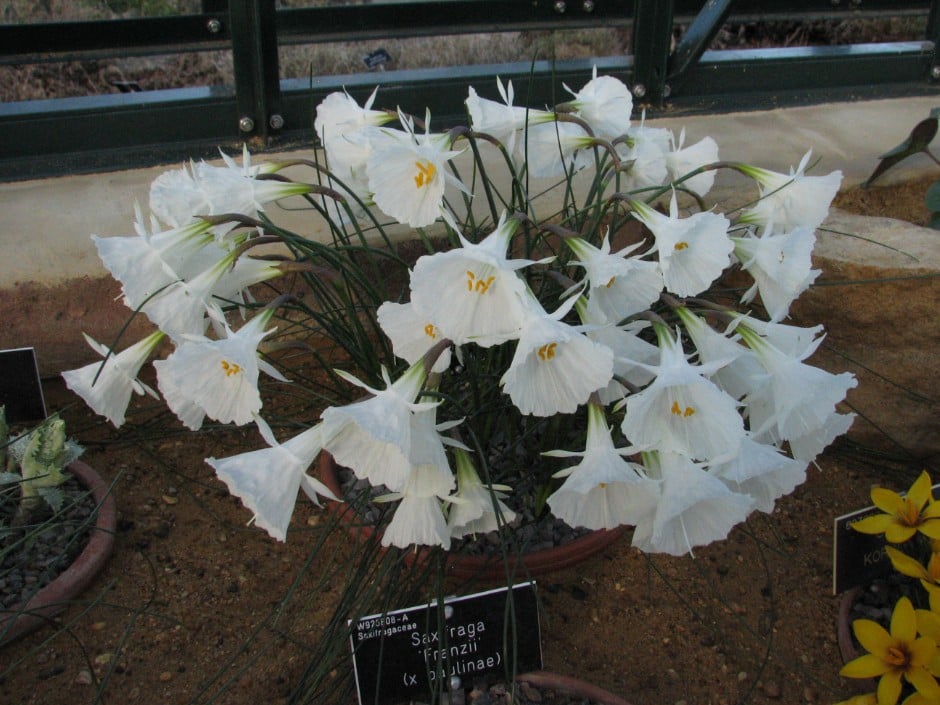Narcissus romieuxii subsp. albidus (13)
white Romieux hoop petticoat daffodil
A small, bulbous perennial with dark green, tubular leaves. The scented, creamy-white flowers, up to 5cm long, have short, narrow petals and a wide, flaring trumpet, carried on 15cm stems between late autumn and early spring
Synonyms
Narcissus albidusNarcissus albidus subsp. albidus
see moreNarcissus (_albidus_ × _romieuxii_)

Size
Ultimate height
0.1–0.5 metresTime to ultimate height
2–5 yearsUltimate spread
0–0.1 metreGrowing conditions
Moisture
Well–drainedpH
Acid, Alkaline, NeutralColour & scent
| Stem | Flower | Foliage | Fruit | |
| Spring | White | Green | ||
|---|---|---|---|---|
| Summer | ||||
| Autumn | White | Green | ||
| Winter | White | Green |
Position
- Full sun
- Partial shade
Aspect
South–facing or East–facing or West–facing
Exposure
Sheltered Hardiness
H4Botanical details
- Family
- Amaryllidaceae
- Native to GB / Ireland
- No
- Foliage
- Deciduous
- Habit
- Clump forming
- Potentially harmful
- Harmful if eaten, skin irritant. Wear gloves and other protective equipment when handling. Pets (dogs, cats, tortoises): Harmful if eaten, skin irritant. For further information and contact numbers regarding pets, see the HTA guide to potentially harmful plants
- Genus
Narcissus are bulbous herbaceous perennials with linear leaves and leafless stems bearing flowers, which may be solitary or in umbels, with 6 spreading perianth segments and a cup or trumpet-shaped corona
- Name status
Correct
- Horticultural Group
- Division 13 daffodils include all natural species and their varieties and forms
- Plant range
- Morocco to Algeria
How to grow
Cultivation
Grow in a cold greenhouse, bulb frame or alpine house in free-draining compost (e.g. 2 parts peat-free, loam-based compost to 1 part grit). Allow to dry out completely during summer dormancy, repotting into damp compost in early autumn. See also daffodil cultivation
Propagation
Propagate by seed sown as soon as ripe in a container in a cold frame, or by separating offsets in early autumn before the roots start to grow
Suggested planting locations and garden types
- Patio and container plants
Pruning
Deadhead as flowers fade and allow foliage to die back naturally
Pests
May be susceptible to slugs, narcissus bulb fly, narcissus eelworm, and bulb scale mite
Diseases
May be susceptible to narcissus basal rot, narcissus leaf scorch or daffodil viruses
Get involved
The Royal Horticultural Society is the UK’s leading gardening charity. We aim to enrich everyone’s life through plants, and make the UK a greener and more beautiful place.